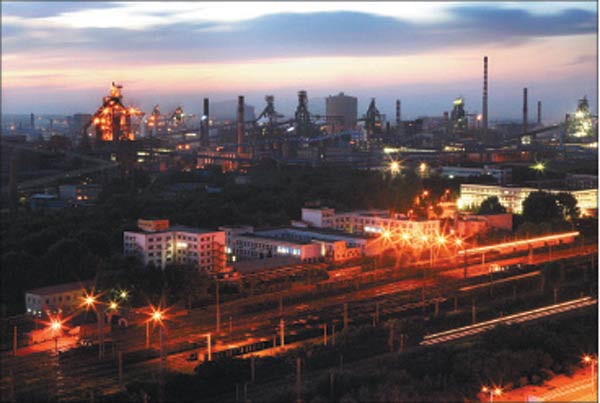Following the advice of a Danish multinational, a city in Liaoning province is tapping into surplus heat from a local steelmaking facility to provide heating to 3.8 million residents
 |
|
A view of the Danfoss Anshan project, which uses surplus heat from steelmaking to heat homes. [Photo provided to China Daily] |
Premier Li Keqiang famously said in Brussels that once Europe creates environmentally friendly and cutting-edge economic solutions that can benefit China's markets, miracles will happen.
A key industrial facility in Anshan, Liaoning province, that is putting the experience and technology of a Danish multinational into practice, is illustrating the truth in Li's statement.
For years, about 3.8 million residents in this polluted industrial city, home to the world's seventh-largest iron and steel company, have primarily burned coal - a major source of air pollution - to provide heat during the winter.
But little did residents know that the steelmaking facilities of Anshan Iron and Steel Group Corp within their city borders were producing a tremendous amount of heat that was not being utilized.
Things began turning around for the city when Danfoss, a multinational from Denmark renowned for its energy-efficient cooling and heating technology, partnered with Denmark's energy consulting group COWI to analyze Anshan's environmental and industrial challenges.
The two persuaded the Anshan government to use surplus heat from Ansteel's facilities as the city's primary energy source, thereby transforming the city's heating supply. The Anshan government built a transmission system that funneled heat from Ansteel to the city's heating networks.
"I think this is an excellent example of helping to improve energy efficiency and urbanization in a sustainable way," said Che Wei, vice-president of Danfoss China. "We are making efforts to identify other projects in China to expand our expertise and experience."
Buildings are also equipped with meters to ensure that each building receives an adequate supply of heat.
According to Danfoss, the pilot project can potentially reduce the annual coal consumption by 173,000 metric tons and reduce carbon dioxide emissions by 289,000 tons, covering half of the urban population.
"With an expected payback time of three years, the financial prospects are very positive," said Che.
And full implementation would lead to annual coal savings of 678,000 tons and avoid emission of 1.38 million tons of carbon dioxide, corresponding to 60-90 percent in coal and CO2 emissions.
Che said the transformation can also reduce particle pollution, which improves the air quality. "In this sense, we have very good cooperation and communication with local authorities, which have already put environmental protection and energy savings high on agenda," he said.
Che says the Anshan case is a perfect encapsulation of the Danish green development model. Resource-poor Denmark has been able to decouple economic growth from energy consumption and excessive CO2 emissions in the past four decades since the global oil crisis of the 1970s. Denmark is also on track to achieve a fossil energy-free future by 2050 without the use of nuclear power, officials say.
